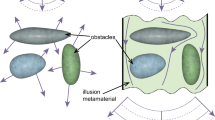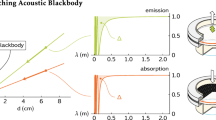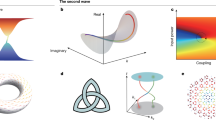Abstract
THE experimental results reported in a previous communication1 confirm the existence of several maxima for the second- and the third-order diffraction lines at oblique incidence and at low sound intensities, when the sound wave-length is small as expected by the closed intensity expressions of Aggarwal2. We have now observed for this small sound wave-length that, when the sound intensity is slowly increased, the number of these maxima diminishes. Further, the emphasis appears to shift towards the first Bragg angle, instead of the diffraction order attaining the maximum intensity at its respective Bragg reflexion angle. The secondary maxima for the second- and third-order diffraction lines at the Bragg angles corresponding to the higher orders slowly disappear, until the maximum intensity occurs only at the Bragg angle corresponding to the first order.
This is a preview of subscription content, access via your institution
Access options
Subscribe to this journal
Receive 51 print issues and online access
$199.00 per year
only $3.90 per issue
Buy this article
- Purchase on SpringerLink
- Instant access to full article PDF
Prices may be subject to local taxes which are calculated during checkout
Similar content being viewed by others
References
Parthasarathy, S., and Tipnis, C. B., [Nature, 182, 1083 (1958)].
Aggarwal, R. R., thesis for Ph.D. (1954) University of Delhi.
Bergmann, L., “Der Ultraschall” (1954).
Author information
Authors and Affiliations
Rights and permissions
About this article
Cite this article
PARTHASARATHY, S., TIPNIS, C. Diffraction of Light by Ultrasonic Waves, Oblique Incidence and Sound Intensity. Nature 182, 1795–1796 (1958). https://doi.org/10.1038/1821795a0
Issue date:
DOI: https://doi.org/10.1038/1821795a0



